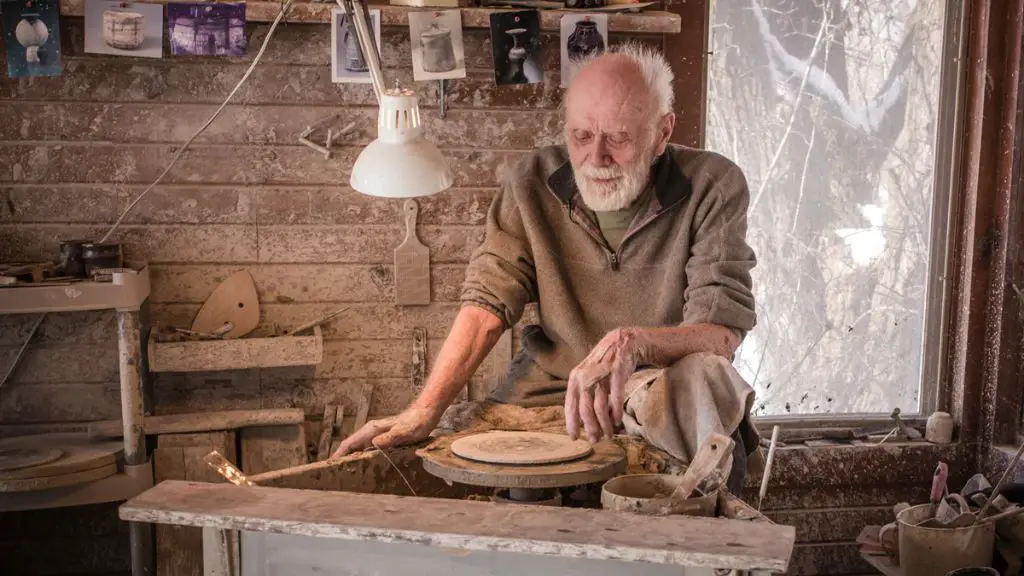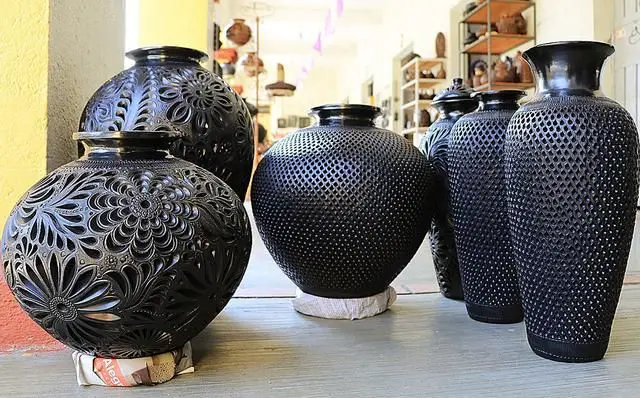What Is Warren Mackenzie Known For?
Warren MacKenzie was a prolific American ceramic artist known for his functional pottery in the folk art tradition. He played a major role in the American studio pottery movement during the 20th century. MacKenzie embraced simple forms and natural aesthetic in his ceramic work, which helped popularize a handcrafted approach in opposition to industrial mass production. His work reflected Asian influences from his time spent studying pottery in Japan.
MacKenzie produced thousands of examples of jars, bowls, cups, vases and teapots over his decades-long career. He became one of the most renowned ceramic artists in Minnesota and his work is highly sought after by museums, galleries and collectors today. MacKenzie is considered a leading figure in the postwar development of American ceramics. His philosophy and technique helped shape the American studio pottery scene and inspired many contemporary ceramic artists.
Early Life and Education
Warren MacKenzie was born in 1924 in Kansas City, Missouri [1]. He developed an interest in art and design from a young age. After graduating high school, MacKenzie studied at the School for American Craftsmen at the Rochester Institute of Technology, where he focused on ceramics and earned a BFA degree [2].
Work at the University of Minnesota
Warren MacKenzie joined the University of Minnesota art department in 1954 where he founded the ceramics program. Over his 40-year tenure, MacKenzie taught generations of ceramic artists before retiring as Regents Professor Emeritus in 1994 (Source).

As a professor at the university, MacKenzie helped shape the ceramics program into one of the finest in the country. His functional pottery philosophy and emphasis on thoughtful design fundamentals influenced many students who went on to become successful ceramic artists themselves.
MacKenzie was deeply invested in his students, often inviting them to his home studio and working side-by-side with them there. He strove to impart not just technical skills but a mindset of creativity and dedication to craft that left a lasting impact. Even after retirement, MacKenzie maintained close ties to the university community through guest lectures, exhibitions, and donations to the collection.
Philosophy and Style
Warren MacKenzie believed in creating functional ceramics for everyday use. He was known for his simple, utilitarian aesthetic, which was influenced by folk pottery traditions around the world. According to the Minnesota Museum of American Art, “Warren Mackenzie’s belief and pleasure in the simple, ‘honest’ pot is well known. For more than fifty years, the internationally recognized potter has pursued the creation of modest, useful, and beautiful ceramic objects”https://mmaa.org/portfolio-item/mackenzie/. MacKenzie prioritized form and function over ornamentation in his pottery. As described by Goldmark Art, “Warren MacKenzie was always most comfortable at the wheel. ‘The making of the pots is the part I like best. Michael Cardew has said, “There are people who live to make pots and people who make pots to live.” I am in the former group’”https://www.goldmarkart.com/blogs/discover/warren-mackenzie-american-ceramics. His simple, thoughtful designs reflected his philosophy of valuing craftsmanship and everyday use.
Technique
Warren MacKenzie was best known for his skill in throwing functional pots on a wheel, which was the method he preferred over any other technique for most of his career. As described in an article from Revere Auctions, “MacKenzie centered the clay on his Leach-style kick wheel, opened the mound into a cylinder, and then shaped the form using a rib and metal kidney tool as the wheel spun at a rhythm unique to him.”
Though his forms were simple, MacKenzie experimented with beautiful, fluid glazes in shades like pale blue, green, and yellow. According to Goldmark Art, “he tested and refined an array of glazes – ash, iron, salt and brushwork – often using the same glaze in surprising new ways.” He took inspiration from ancient Chinese pottery and folk traditions to create unique effects by altering the glaze thickness, using wax resist techniques, and firing multiple times.
MacKenzie was also known for his large, wood-fired climbing kiln that he built himself and modeled after ancient Japanese anagama kilns. As described in an article from The Marks Project, “MacKenzie’s kiln had two chambers and the works were fired for up to three days, allowing fly ash to melt into the glaze surface.” This wood-firing technique added variables and natural effects to the glazed pots.
Notable Commissions
Warren MacKenzie received many major commissions throughout his career for public and corporate art installations. He created large-scale architectural ceramics for universities, corporations, and museums. Some of his most significant commissions include:
In 1964, MacKenzie created 39 large ceramic murals measuring 8 feet by 20 feet for the exterior walls of Fraser Hall at the University of Minnesota Duluth. This was one of his earliest and largest public art commissions. As described in an interview with the Smithsonian Archives of American Art, MacKenzie felt these exterior architectural reliefs “offered the opportunity to involve a large number of people” (Smithsonian, 2002).
Throughout the 1960s-1980s, MacKenzie produced major commissions for corporate offices and public spaces, including large ceramic tile installations for Control Data in Bloomington, MN, Investors Diversified Services in Minneapolis, and Merrill Lynch in New York City (Gallery Gen).
In the 1990s, he created public artworks for the Minneapolis Convention Center, Minneapolis Public Library, and Minneapolis Institute of Art. His tile wall for the Minneapolis Convention Center ballroom measured over 1,200 square feet.
MacKenzie’s architectural ceramics can be found in major museum collections as well, such as the Metropolitan Museum of Art, the Smithsonian American Art Museum, and the Minneapolis Institute of Art.
Exhibitions and Collections
Warren MacKenzie’s functional pottery has been exhibited widely across the United States and internationally. His early work was featured in a 1954 solo exhibition at the Walker Art Center in Minneapolis (MutualArt). Major exhibitions were later held at the Everson Museum of Art in Syracuse in 1974 and the Renwick Gallery of the Smithsonian American Art Museum in Washington, DC in 2011.
MacKenzie’s ceramics are represented in the permanent collections of prominent museums including the Metropolitan Museum of Art and Museum of Modern Art in New York, the Los Angeles County Museum of Art, the Detroit Institute of Arts, and the Victoria and Albert Museum in London. His work has also been acquired by the Philadelphia Museum of Art, the Renwick Gallery, the Minneapolis Institute of Art, and the Museum of Arts and Design (Lucy Lacoste Gallery).
Legacy
Warren MacKenzie was hugely influential as an educator and helped establish the field of American studio pottery. He taught at the University of Minnesota from 1946 to 1990 and mentored generations of students, including renowned potters Stephen Earp, Steven Branfman, and Richard Bresnahan. His teaching philosophy emphasized functional pots for everyday use made with simple forms and natural ash glazes.
MacKenzie’s long career at the university allowed him to shape the ceramics curriculum and pass on his values and techniques to thousands of students. His own work set an example of dedication to craft and skill in creating useful, humble objects. In this way, MacKenzie helped elevate the status of studio pottery in postwar America and demonstrate it as a serious artistic pursuit.
The potter’s output and educational influence inspired generations of American ceramic artists to pursue functional work. His philosophies and style left a lasting imprint on the field. Artists across the country continue to be influenced by MacKenzie’s contributions decades after his retirement from the University of Minnesota. As writer Paul Gardner observed, “Warren MacKenzie’s legacy is firmly cemented as one of the most influential ceramic artists of the 20th century.”
Later Life
Warren MacKenzie retired from the University of Minnesota in 1990 at age 66 after working there for over 40 years, but he continued creating pottery and teaching workshops across the country. Even into his 90s, he could be found most days at his kick wheel in his Stillwater, Minnesota studio.
On December 31, 2018, Warren MacKenzie passed away peacefully at his home at the age of 94 (Source). He lived a full life doing what he loved – making functional, earthy pottery inspired by ancient Asian traditions but with his own personal twist. His legacy lives on through his vast body of work and the many potters he taught and inspired.
Significance
Warren MacKenzie is considered one of the most influential ceramic artists in America in the 20th century. His simple, functional pottery played an important role in the American studio craft movement by bringing Japanese and British aesthetics to modern American ceramics. Warren MacKenzie helped shape the direction of American pottery by establishing functional pottery as an art form appreciated for its aesthetic qualities rather than just its utility.
MacKenzie’s legacy stems from his long teaching career at the University of Minnesota, where he taught thousands of students his philosophy of functional pottery as an artform. Many of his students went on to be successful ceramic artists themselves, further spreading MacKenzie’s aesthetics and attitudes. His philosophy on art and craft had a major impact on the growth of studio pottery in America.
Today, MacKenzie’s pots are highly valued by collectors and museums for their simple elegance, use of natural glazes, and handcrafted imperfections that exhibit the human touch. The lasting demand for his works decades after they were made is a testament to his significance. MacKenzie helped elevate American perceptions of handmade pottery from craft to art. His accessible, everyday objects made from simple materials shaped a distinctly American contribution to worldwide traditions of ceramic art.



